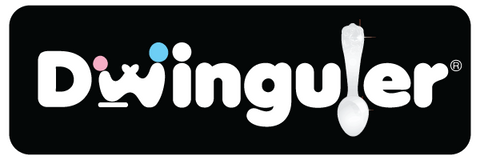Baby Proofing Made Easy: A Parent's Guide
As a parent, it's your job to keep your kids safe. While that sounds like an easy task, it can be challenging. First, you must babyproof your home by removing potential hazards on your property. Here is a simple guide for babyproofing your homes.
Bathrooms Locked or Secured at All Times
Bathrooms are notorious for being sources of danger for children. However, there are many ways parents can implement safety in their bathrooms that will help protect their children from injury. First, always check any pails with water or undrained bathtubs. Kids can drown in small amounts of water, even just a few inches. Second, always secure the settings of your hot-water heater; 37-38°C is a safe water temperature for babies and kids, but if it exceeds 50°C, it can cause scalding or receive a burn bad enough to require medical treatment.

Use Door Knob Covers
A day will come when your precious baby grows into a toddler and learns how to open a door using the knobs; that is why a door knob cover is suitable for baby- proofing every room. Kitchens, bathrooms, and even rooms near the stairs need safety precautions for your little ones.

Keep the Heavy Objects in the House to Safety
Children are curious and always want to explore and touch things. Parents should keep all heavy objects away from their children. Flat-screen TVs should be mounted on the wall or with safety straps; babies and toddlers like to pull cords and plugs, leading to accidental tip-overs from the TV. Make sure to secure cables behind the TV after being mounted. Dressers and cabinets are dangerous if being tipped over by kids causes injuries. It can even be fatal. So, secure it with brackets and anchors to prevent it from leaning towards your child when accidentally climbed on. Washing machines, whether its top load or front load, toddlers who discovered climbing can be curious and can be locked inside the washers; to babyproof washers, place the washing machine against the wall, front load door or top load door must always be closed, use the child safety feature of the machine and lastly you can install an exterior washer safety lock that's available in the market.

Cautious About Electricity
Safety is a top priority for new parents. From learning about baby proofing to installing anti-scald valves, you'll do everything possible to ensure your child's safety. With their newfound mobility, electricity can be a particularly dangerous worry with small children in the house. For electrical outlets, use outlet boxes, plastic outlet covers, and self-closing outlet covers. As to appliance cords that can cause tripping, electrocution when chewed, and can cause choking; it's best to wrap lines when not in use.

Window Blinds
Remember the window blinds. Babies and toddlers love to wrap something around their bodies because they are curious explorers, and because of that, strings of window blinds are also a choking hazard, so it's best to use safety cord straps or cordless blinds.

Use Baby Gates
Babies usually start to crawl between 7 months to 12 months. And when you say "crawl," they are faster than you can imagine! That is why it is best to install baby gates in stairways, cased openings, and archway doors.

Do the Small Object Tester
Aside from tripping over furniture, and electric hazards, another cause of injuries is the "small toys" at home. As your baby grows, it's natural that they put something in their mouth because it's part of their sensory exploration. However, this can also lead to choking. That is why it's helpful to do a small object tester. For example, use an old toilet paper tube- if an object or a toy quickly shoots inside the tube, which is a potential choking hazard for the baby.

Keep Cleaning Products and Chemical Out of Reach
Put chemicals and other cleaning products out of reach, such as cabinets or cupboards. But then, as early as two, some toddlers can climb up the counters or open cabinets, so it's best to put baby-proof safety locks to be more secure.

Secure Stovetops and Kitchen Utensils
Little children love to crawl, tinker and play with stuff within their reach; that is why it is best to put safety stove cover knobs. For kitchen utensils, a simple fork and a knife can cause injuries. Better to keep them away from counters and tables. Moreover, when cooking, it is best to put the baby or toddler in a safe spot to play. Babies love to move even when carried by parents, and when it happens while cooking, it is a potential risk for pots with boiling food to spill on your baby.

Provide a Safe Place for the Baby to Play
Chores are forever! As parents, multitasking is vital to surviving every day. Cooking, cleaning, and sorting stuff can be difficult if the baby is awake and ranging in the age of 6 months and up, wherein they are climbers, crawlers, or even walking early. Best to have baby playmats so your little ones can crawl and walk safely. In addition, playmats are best combined with playpens so that your kids will play in a safe spot just for them.

Babyproofing your home can be overwhelming as a parent, especially if you're unfamiliar with your home's potential hazards. However, making your home safe for a baby is a vital step to ensuring the health and safety of your little one.

